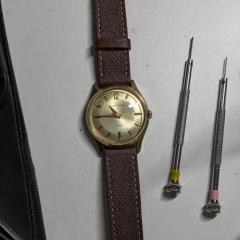New Video - Vintage Omega 30T2 (1940's Military Watch) With Broken Impulse Jewel
-
Similar Content
-
Recently Browsing
- No registered users viewing this page.
-
Topics
-
Posts
-
They are for balance wheels only and wheels with similar pivots (B = bombé). You can use flat jewels for balance wheels (not recommended) but no bombé jewels for ordinary wheels.
-
By ManSkirtBrew · Posted
I also just realized I had that tech bulletin saved...but in French for some reason 🙂 No, I don't speak French. 2172_Bulova 11AOAC 11AOACD 11AOACB.pdf While parts are drying I'm on the hunt for a replacement crystal. I can measure the opening and get a generic one, but it'd be nice to find out what the original looked like first. Of course, case code 3093 does not appear in any of my reference materials. JulesBorel lists a C3093 case code, and shows Bulova part # 1222-5. Does anyone have information on this guy? I found a thread here talking about how the -5 is the height of the crystal, but that's as far as I've gotten. I also found one site that claims to have it in stock, but before I risk my $20 I'd like to confirm it's the right part. -
By steve1811uk · Posted
Thanks for the replies. I did the job today and found that the oversized stem fitted just perfectly into the worn mainplate without any adjustment. Original stem diameter was 1.24mm and the oversized was 1.40mm. I did have to make an adjustment to the setting lever though. The small pip that engages with the groove in the stem hub was slightly to wide. I made that a bit smaller with a fine file. Don't ask me why that was too big, it just was. All working very well now. No wobble and not pulling out. New crown fitted as good measure.
-







Recommended Posts